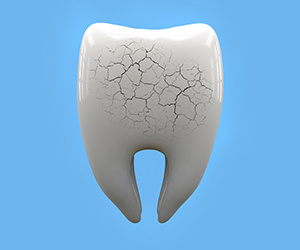
Cracked Tooth Syndrome, also known as ‘cracked cusp syndrome’ or ‘split tooth syndrome’ refers to the situation where a tooth is incompletely cracked but no part of it is broken off. Such cracks are too small to be visible on X-rays and at times, these are under the gum. This syndrome most commonly affects the lower back teeth because they absorb most of the forces of chewing.
What causes Cracked Tooth Syndrome?
- Habit of clenching or grinding teeth makes people more susceptible to cracked tooth syndrome.
- At times, a normal bite makes certain molar cusps to put so much pressure on the opposing tooth that it cracks.
- Teeth that have undergone root canal treatment or teeth with fillings are at larger risk of getting cracked as they have become weaker.
- Moreover, if you have one cracked tooth, you are at the greater risk of having more either at the same time or in future.
What are the signs and symptoms of Cracked Tooth Syndrome?
Cracked Tooth Syndrome is one of those dental problems which are difficult to be diagnosed, because the pain associated with the problem is not predictable. The patient may report the following variable symptoms:
- Sharp pain while biting on a certain tooth; which gets worse when applied biting force is increased.
- Tooth may become more sensitive to cold temperatures i.e. sharp pain while drinking cold beverages or eating cold food.
- Sharp, fleeting pain when biting force is released from the tooth.
- Feeling pain while backward and forward grinding of teeth
- Eating and drinking sugary substances brings pain.
- Eating certain foods and biting in a specific way may be painful.
What are the treatment options available to treat Cracked Tooth Syndrome?
Treatment of the condition depends upon the locations, direction and extent up to which tooth is cracked. Following are the treatment options used to treat the conditions:
- If one or more cusps are affected, then dentists may restore them with ‘Crown’.
- A root canal may be advised if your pulp is affected.
- A tooth may be extracted in the case where crack is extended into the root of the tooth under the bone. You can have the extracted tooth replaced with an implant or a bridge.
Contact Dr. Bikram Singh DMD for the best possible and state-of-art dental solutions. Our certified dental expert uses top of the line techniques and as well helps you to fight back dental problems.
